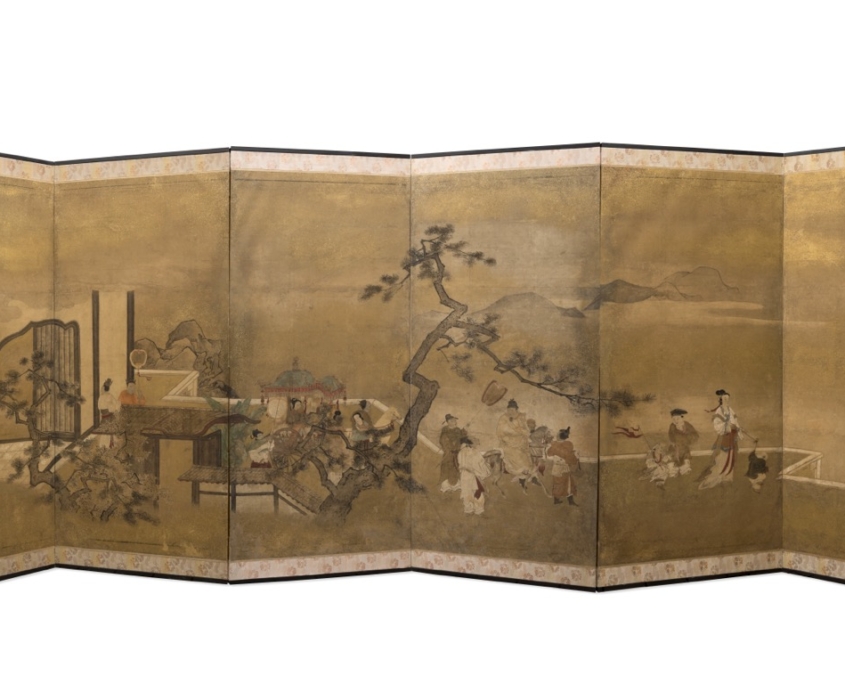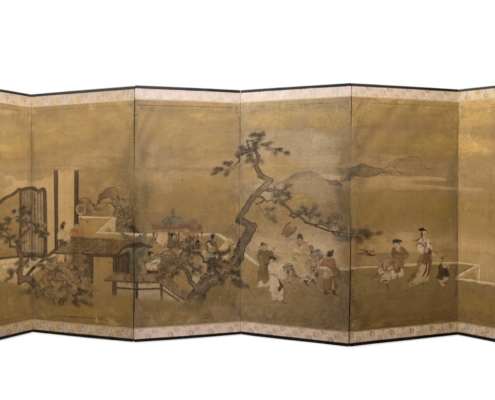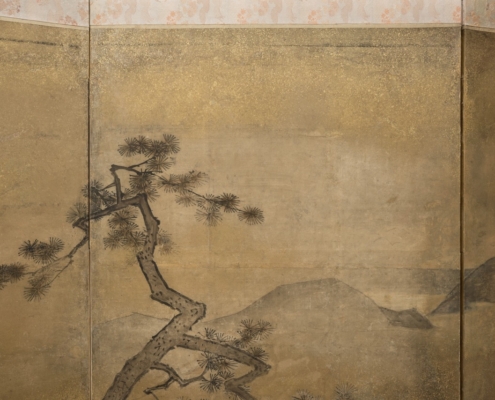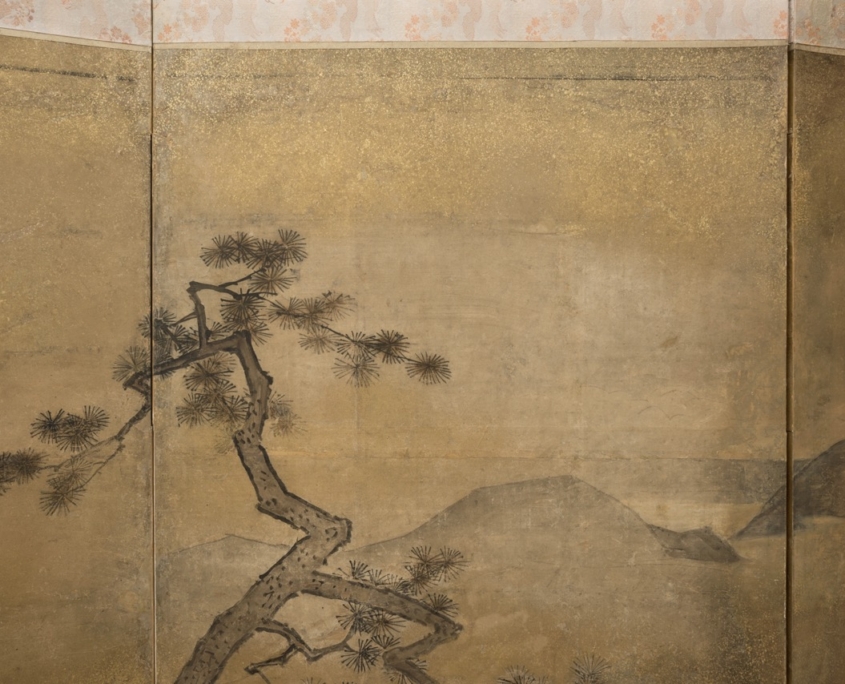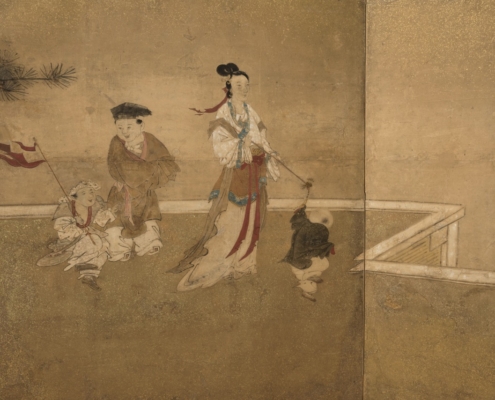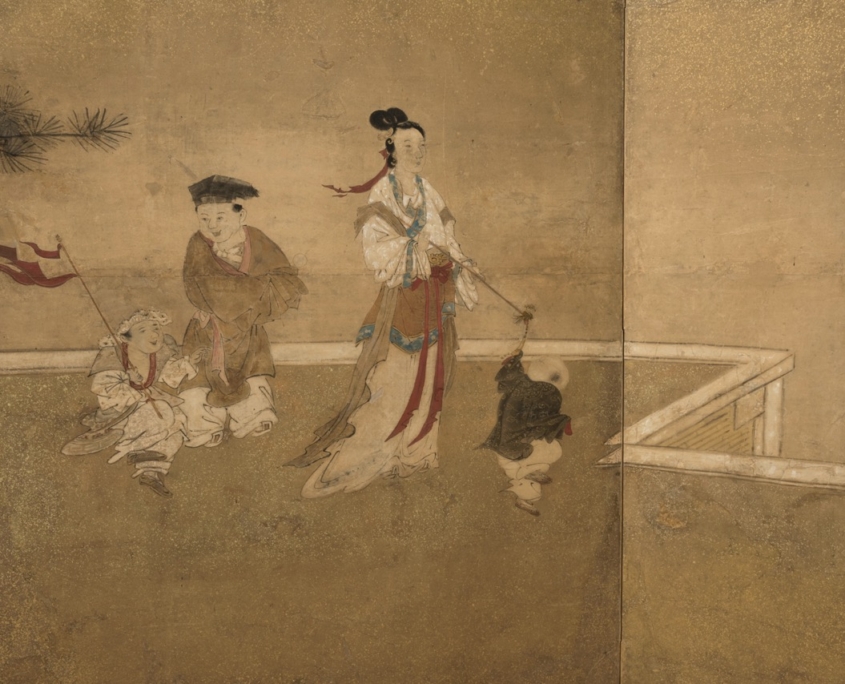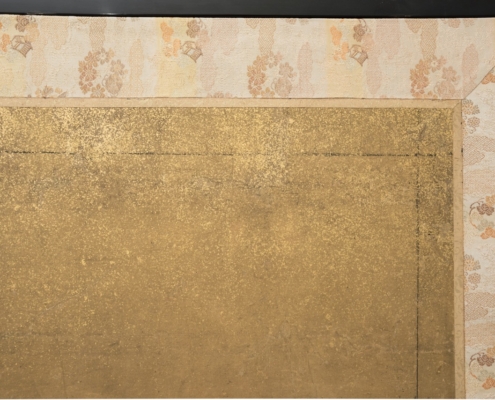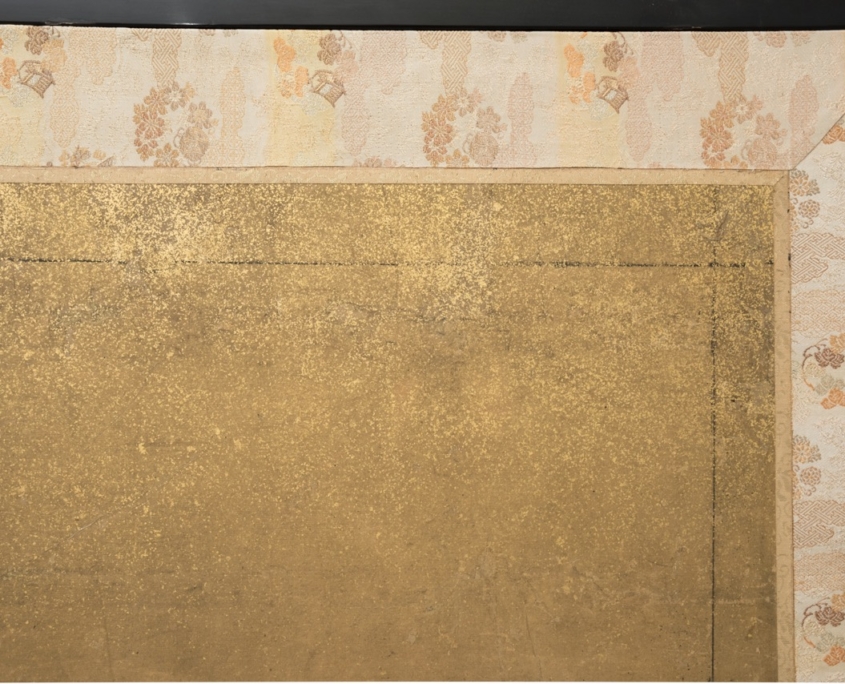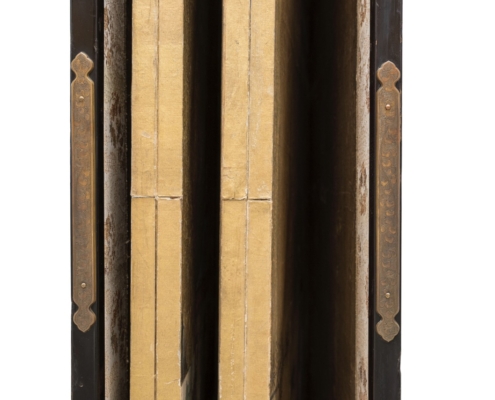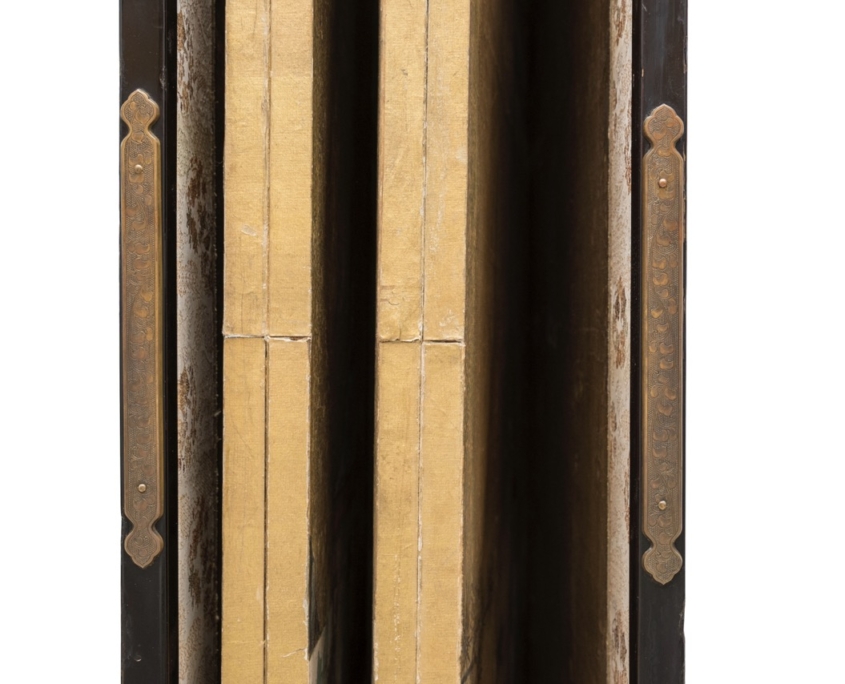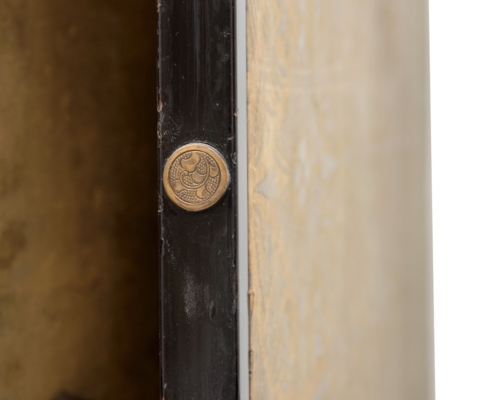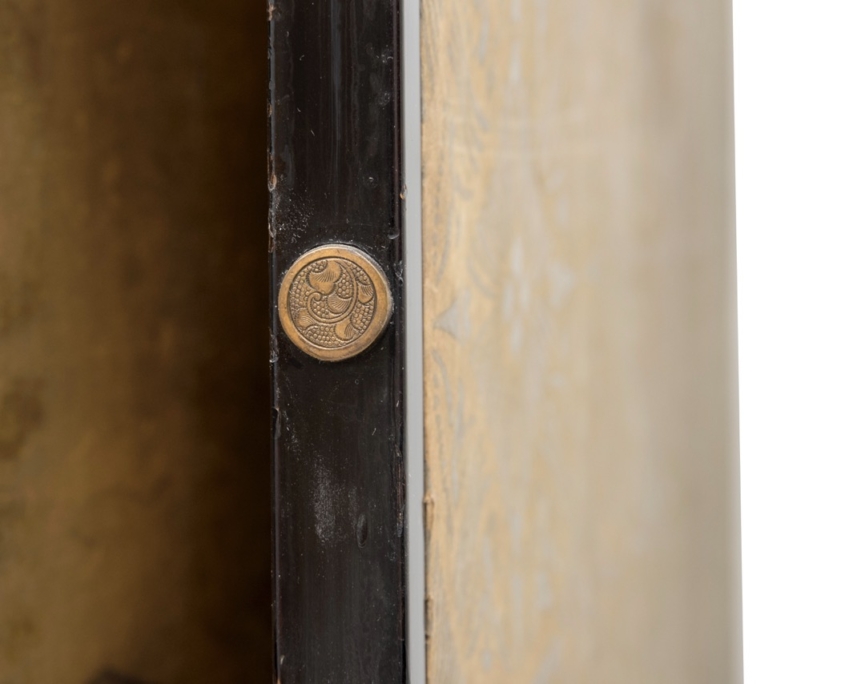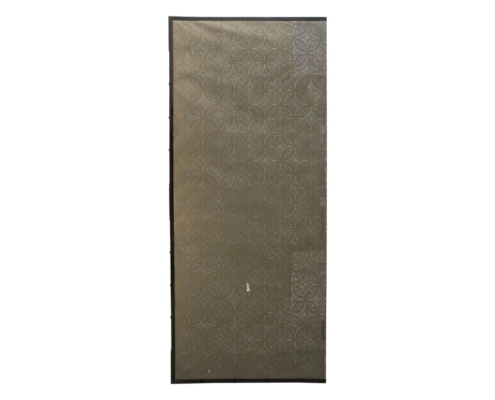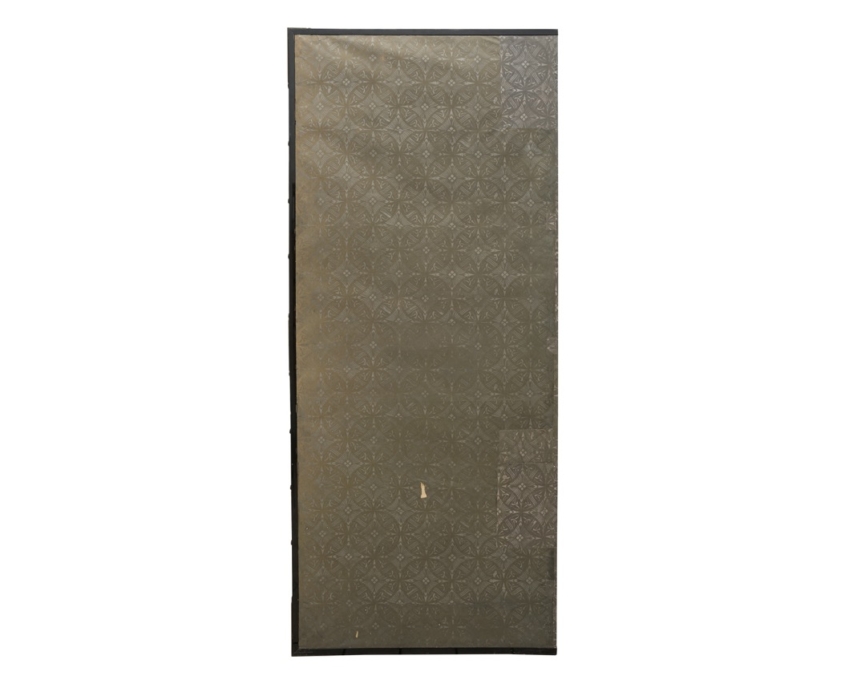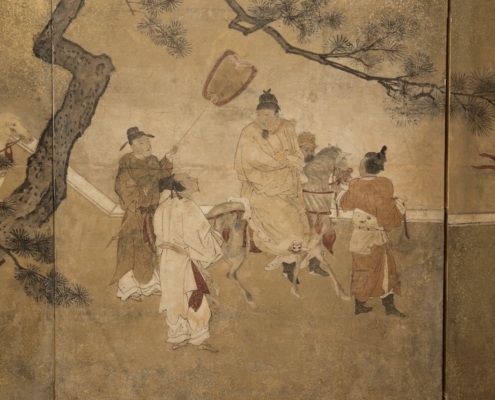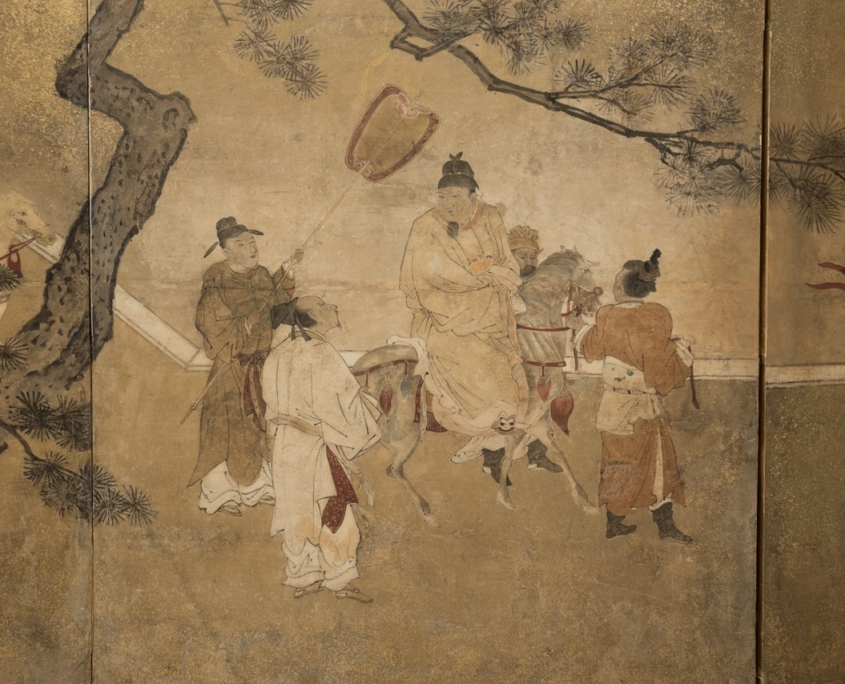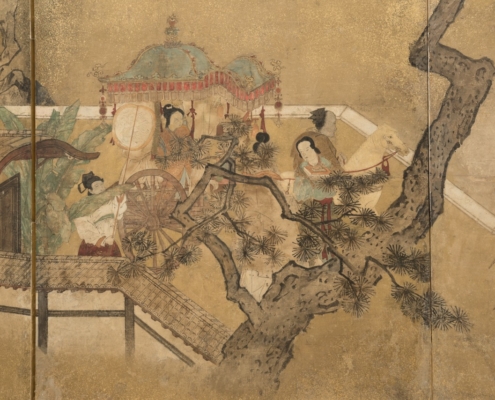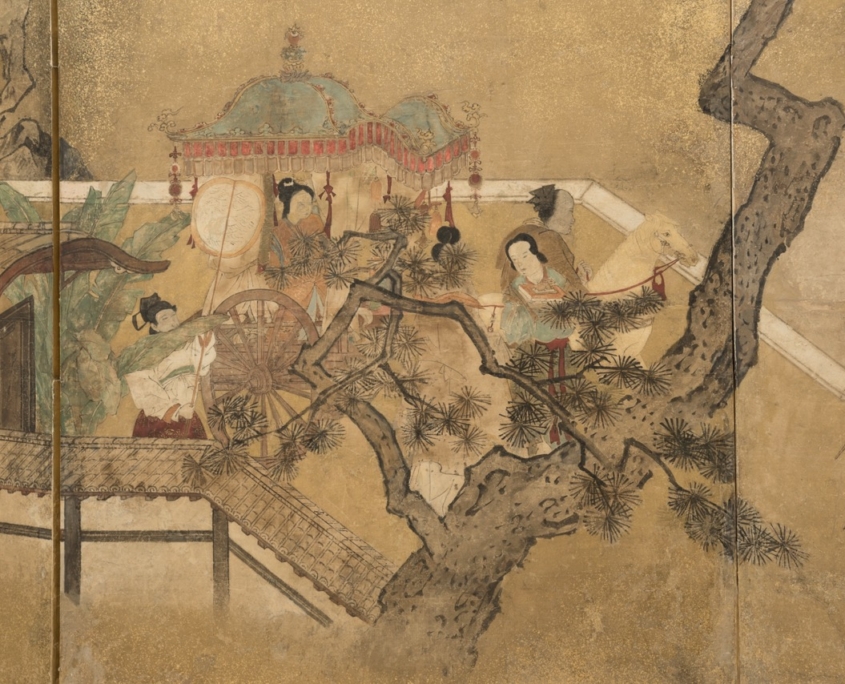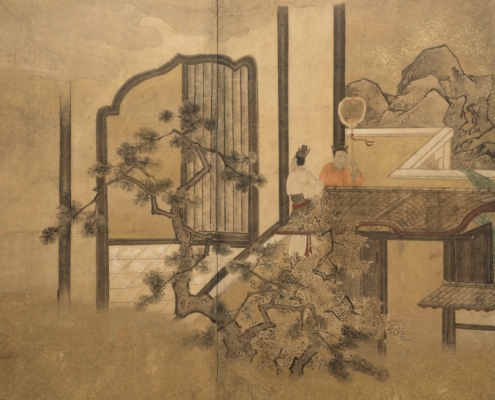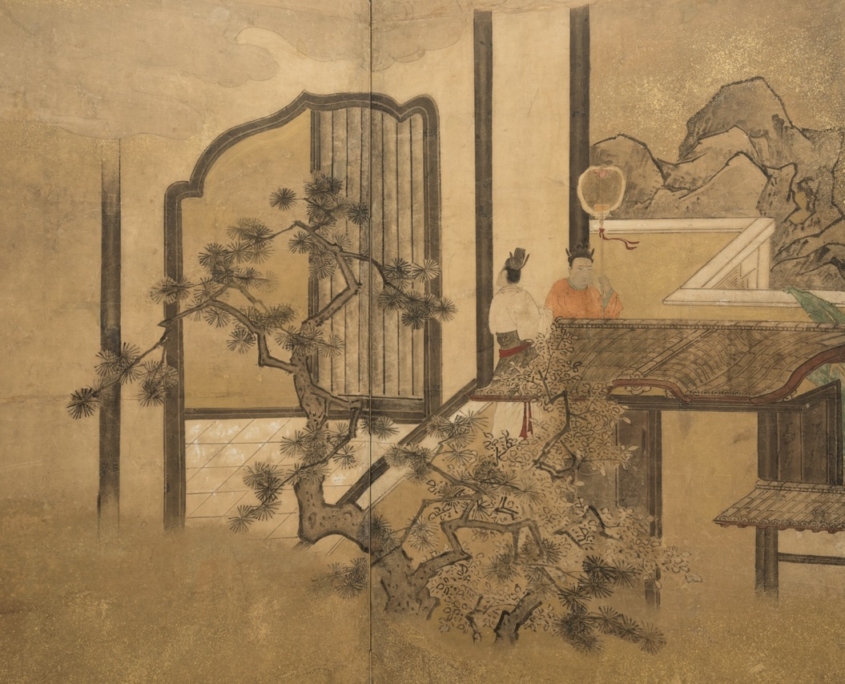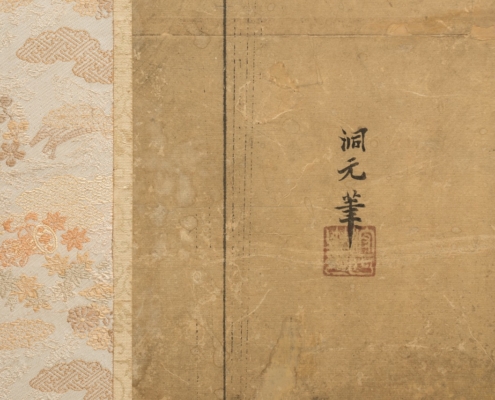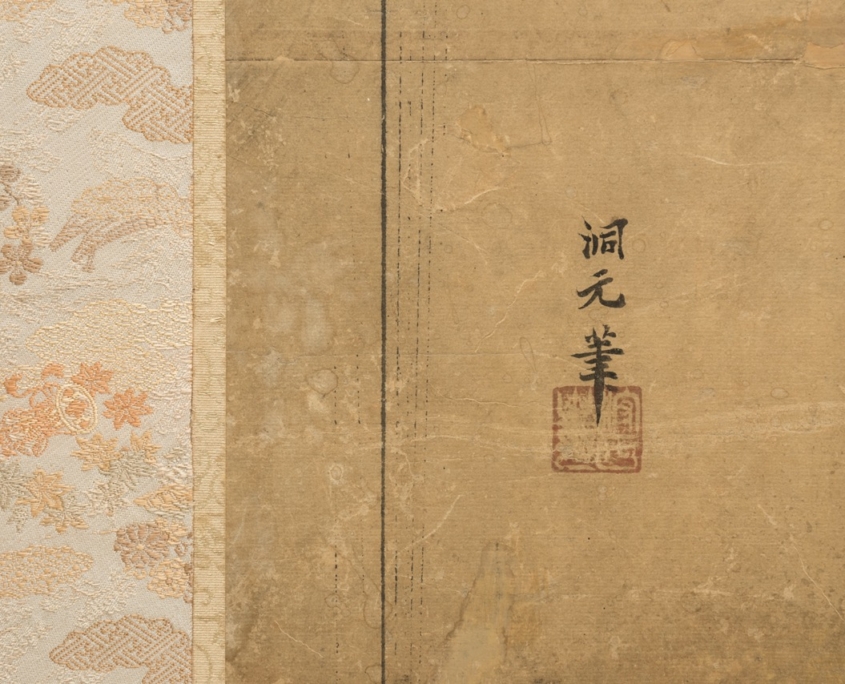FOLDED-SCREEN THE SONG OF EVERLASTING SORROW, KANO SCHOOL – EDO, 17th
Reference: 2015-245
Six-panels screen depicting the exit from the city of a Chinese emperor on horseback and his concubine in a luxurious palanquin.
It may be a scene illustrating the poem The Song of Everlasting Sorrow (Chang hen ge, 長恨歌) written by Bai Juyi (772-846), which recounts the tragic love story between the emperor Ming Huang (also known as Tang Xuanzong, 685-762) and his favorite concubine, the beautiful Yang Guifei (719-756). His excessive love led to intrigues at court and unrest in the empire. A rebellion in 755 forced the emperor to flee the capital. The uprising led by the general An Lushan (705-757) accused Yang Guifei of the emperor’s negligence and was executed the following year. The emperor abdicated shortly afterwards, setting the decline of the Tang dynasty.
This story became a popular theme for the Kanô school painters from the Momoyama period (1573-1615) to the early Edo period (1615-1868). This long-lasting popularity in Japanese visual and literary arts reflects a strong emotional identification with the love, death and longing themes, and the persistent idea of Tang Dynasty China as a cultural golden age. Moreover, the poem served as source of inspiration for the famous novel The Tale of Genji (c. 1010) written by Murasaki Shikibu (c. 973 – 1014/1025).
Japan, Kanô Dôgen (1643-1703) – Edo period (1603 – 1868) – second half of the 17th century
Height: 73.2 in / 186 cm – six-panels – width: 188 in / 480 cm (total)




